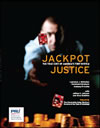 The New York Law School Law Review’s latest edition is all about the plaintiff’s bar. The opening to this article should whet the appetite for a full read, and should be interesting to those who think we have too many lawsuits. The article is (for those non-lawyers peeking in today) deeply foot-noted to supporting research:
The New York Law School Law Review’s latest edition is all about the plaintiff’s bar. The opening to this article should whet the appetite for a full read, and should be interesting to those who think we have too many lawsuits. The article is (for those non-lawyers peeking in today) deeply foot-noted to supporting research:
In any given year, as many as 98,000 people may die from preventable medical errors. This is more than the number of people who die from highway auto accidents, workplace accidents, and breast cancer combined. Yet according to the Bureau of Justice Statistics, only 1156 medical malpractice cases were litigated in the seventy-five most populous counties in 2001. Of those, only one-third involved a wrongful death claim. Why is there such a discrepancy between the number of wrongful deaths and the number of cases litigated?
One possible answer is that lawyers simply decline to file a large number of potential cases. Plaintiffs personal injury lawyers are commonly portrayed as greedy “ambulance chasers” who will take any case regardless of merit. However, a number of studies have shown that personal injury lawyers are highly selective about the cases they choose to accept. Although negligence victims do sometimes successfully pursue their cases without a lawyer, it is generally accepted as a truism that lawyers are a necessary, but not sufficient, condition for obtaining compensation through the civil justice system. Thus, like other professionals who control people’s access to socially valued resources, plaintiffs’ lawyers act as “gate-keepers” to justice. Yet despite this important implication for social justice, only a small handful of studies have sought to uncover the process by which lawyers decide which cases to accept and which to decline. In this article, I seek to replicate questions examined in these earlier studies with a specific focus on how the more elite stratum of plaintiffs’ personal injury lawyers go about the task of case selection.
These are the articles:
How Social Hierarchies Within the Personal Injury Bar Affect Case Screening Decisions, by Mary Nell Trautner (intro is above);
How the Spider Catches the Fly: Referral Networks in the Plaintiffs’ Personal Injury Bar, by Sara Parikh;
Texas Plaintiffs’ Practice in the Age of Tort Reform: Survival of the Fittest – It’s Even More True Now, by Stephan Daniels and Joanne Martin;
Blame it on the Bee Gees: The Attack on Trial Lawyers and Civil Justice, by Robert S. Peck and John Vail;
How the Plaintiffs’ Bar Bars Plaintiffs, by Richard L. Abel
(hat tip to the Tortellini)



